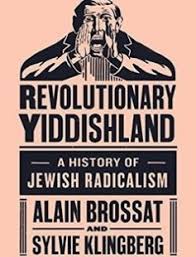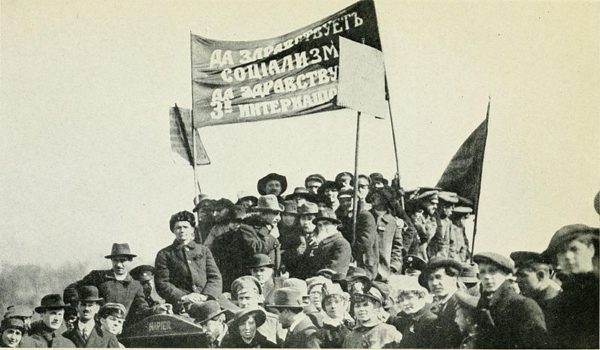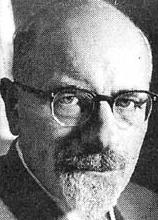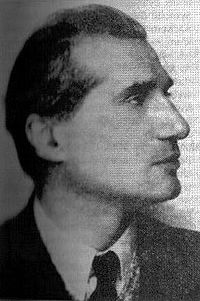The Jewish working class of Eastern Europe has passed into the mists of time, but during its heyday in the late 19th and early 20th centuries, it produced a remarkable cadre of utopian revolutionaries ranging from Socialists and Communists to Bundists and Zionists. Whether manual workers or intellectuals, they emerged from what was the Pale of Settlement, the vast expanse of territory in the Russian empire stretching from the Baltics to western Russia.

“This wretched, over-exploited populace several million strong, concentrated and very homogeneous in terms of its conditions of existence, its traditions and cultural references, its language, no longer exists except through its survivors and scattered traces,” write Alain Brossat and Sylvie Klingberg in the new edition of Revolutionary Yiddishland: A History of Jewish Radicalism, (Verso), a solid primer that covers all the bases.
Hailing from traditional societies resistant to change, these Jews were affected by a series of seminal transformations — the Bolshevik Revolution, the Russian civil war, the reemergence of Poland as an independent sovereign state, the abolition of the Pale of Settlement, the breakdown of antiquated Jewish community structures, the establishment of a collectivized economy in the Soviet Union, and, ultimately, the Holocaust.
Under such kinetic conditions, the tides of change swept away old customs and values, transforming virtually everything in its wake.

Isaac Deutscher, a renowned Communist who would write the acclaimed The Non-Jewish Jew, was touched by these political and social upheavals. When he was 14, the authors note, he made the acquaintance of a young Jewish worker who was an atheist and Communist. He took Deutscher to a Jewish cemetery, sat him down on the tomb of a rabbi and retrieved two ham sandwiches from his pocket. Deutscher ate one of them, but, having been raised in an Orthodox home where pork was absolutely forbidden, he feared that thunder would strike him down. Nothing of the sort happened, and Deutscher broke with his religious past.

Yaakov Greenstein, another convert to the cause, was drawn in by the scourge of antisemitism. As it flared continually in interwar Poland, he concluded that Socialism was the only possible solution. For mainly this reason, Jews joined the Polish Communist Party in the 1920s and 1930s in droves. Some went further. They fought for the republican side during the Spanish Civil War.
The Communist Party in Poland took the concerns of their Jewish members into consideration when formulating policy, Brossat and Klingberg say. But after World War II, Jewish Communists in Poland were under immense pressure to assimilate. They Polonized their names, realizing they could not hold important jobs unless they had a Polish “profile.” This process, they add, induced some to conceal their Jewish descent from their children.
The ascent of Polish Jews to prominent positions in the army, police and diplomatic corps was also a function of Soviet calculation. Wary of a resurgence of Polish nationalism, the Soviets had Jews placed in key slots, not only in Poland but elsewhere in the Soviet bloc, knowing they would faithfully toe the party line.
Ultimately, they suffered betrayal. In the aftermath of the Six Day War, they were victimized by state-sponsored antisemitism under the guise of anti-Zionism, forcing thousands of loyal but disillusioned Jewish Communists to leave Poland.
In the Soviet Union, Jews had experienced the same kind of disillusionment.
Emancipated after the collapse of the Romanov monarchy in 1917, Jews tended to identify with the Bolshevik regime, which equated antisemitism with counter-revolution. But even among radicals, only a minority supported the Bolsheviks, while a majority leaned toward the Mensheviks, the Bund or the Zionists.
Prior to the revolution, the Bolsheviks published little material in Yiddish, hardly bothering to adapt their propaganda to the Jewish working class. “Thus the Bolsheviks largely left the field open the Bund, whose influence on the eve of the revolution remained predominant among the Jewish workers of the Pale of Settlement,” Brossat and Klingberg note.
The Bund itself was eventually marginalized by the Soviet government. In 1941, two of its leaders, Victor Alter and Henryk Erlich, were ordered executed. Worse was yet to come. After World War II, Joseph Stalin cracked down on Jews and Jewish institutions with a ferocity that few could have foreseen.

In their view, Birobidzhan — the autonomous Jewish region in the wilds of Siberia — was never destined to become a real Jewish republic. In schools and government bodies, and even in courts, Yiddish was summarily replaced by Russian. “In this way, by the end of the 1930s, the entire ‘national’ and ‘democratic’ gains of the Jewish population had been reduced to nothing.”
Their observations on the Communist Party in Palestine and Israel are instructive.
From the outset, it encountered difficulty gaining a foothold among Arab workers, only a small number of whom formed a proletariat in the modern sense of the word. Then, in 1943, the party split into Jewish and Arab wings. The party reconstituted itself, but from the mid-1960s onward, it was mostly composed of Arabs, a far cry from the era when it was a genuine “binational” party.